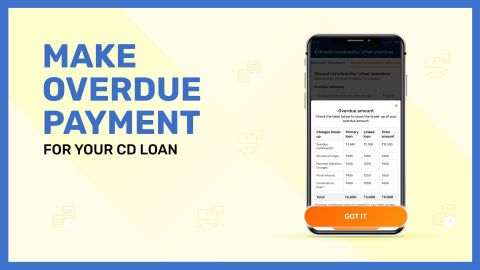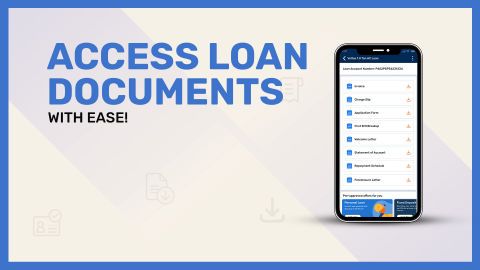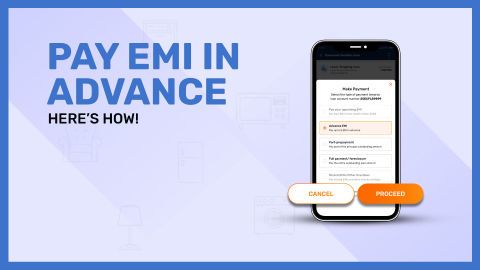Car loan disbursement: Everything you need to know
Buying a car is an exciting milestone, and securing a car loan makes the process smoother. However, after loan approval, the most crucial step is loan disbursement—the transfer of the approved loan amount to the car dealer or the borrower’s account. While this might seem straightforward, delays can occur due to various reasons, leaving borrowers anxious. Understanding the car loan disbursement process, possible delays, and reasons why your loan amount may not be credited can help you stay prepared and avoid unnecessary setbacks. From incomplete documentation to verification issues and lender-specific policies, multiple factors influence when and how quickly the loan is disbursed. This guide will take you through the common reasons for disbursement delays and offer insights into why your car loan may not be credited on time. Let’s dive in to ensure a hassle-free car loan experience!Understanding car loan disbursement delays
Car loan disbursement is the final step in getting a car loan, where the lender transfers funds to either the car dealership or your bank account. While some loans are processed quickly, others experience delays. Here’s why:Incomplete documentation – Missing or incorrect paperwork, such as identity proof, income details, or bank statements, can slow down the process.
Loan verification delays – Lenders conduct thorough verification of credit scores, income, and employment history before releasing funds.
Bank processing time – Even after loan approval, banks may take a few days to process the disbursement, depending on their internal workflow.
Festive season or high application volume – Peak times like holidays may result in backlog delays.
Technical issues – System failures or glitches in fund transfers can impact disbursement.
Pending down payment – Some lenders require a down payment confirmation before transferring the loan amount.
Dealership coordination – If the loan is paid directly to the car dealer, delays in their processing may also affect disbursement.
Understanding these factors can help you anticipate and resolve potential delays.
Reasons why your car loan amount may not be credited
If your car loan has been approved but the amount hasn’t been credited, one of the following reasons might be the cause:1. Documentation issues
Missing or incorrect documents can put your loan on hold.Mismatched personal details can cause verification failures.
2. Incomplete KYC verification
If your KYC (Know Your Customer) process isn’t complete, funds won’t be released.Banks cross-check ID proofs, addresses, and PAN details before approval.
3. Loan agreement not signed or approved
A signed loan agreement is required before disbursement.Any missing signatures or mismatches can lead to delays.
4. Technical or banking delays
Some banks take extra processing time for fund transfers.Unexpected system errors or server downtimes can affect transactions.
5. Pending down payment confirmation
If the lender requires proof of down payment, disbursement will be held until verified.6. High loan processing volume
Festive seasons and year-end sales can slow down loan disbursement due to a high number of applications.7. Changes in loan terms
If there’s any last-minute change in loan tenure, interest rate, or repayment plan, it could delay approval and crediting.8. Dealer-related delays
If the lender directly credits the dealer, a delay on their end might affect the process.9. Credit score or eligibility reassessment
Some lenders conduct a final credit check before disbursing funds, which may cause unexpected issues.10. Loan approval still in process
Loan approval and disbursement are separate steps, and your loan might still be under final review.To avoid unnecessary delays, always ensure your documentation is complete, follow up with the lender regularly, and stay informed about the bank’s disbursement policies.
Steps to take when your car loan is disbursed but not credited
If your car loan has been disbursed but the amount hasn’t been credited, follow these steps to resolve the issue efficiently:Check your loan disbursement confirmation
Verify whether you have received an official loan disbursement confirmation from the lender.
Cross-check details such as the disbursed amount, date, and receiving bank account.
Verify your bank account details
Ensure that the bank account details provided to the lender are correct.
If the amount was sent to the wrong account, notify the lender immediately.
Wait for the standard processing time
Some banks take 24-48 hours to process loan disbursements, depending on their internal systems.
Check with your bank if there are any delays from their end.
Check your car loan account statement
Review your loan statement to confirm if the disbursement has been processed correctly.
If the amount appears as debited but is not credited to your account, report it to the lender.
Look for technical or banking issues
Sometimes, system failures or bank holidays can cause processing delays.
Check for any system downtime announcements from your bank.
Contact the lender’s customer support
Reach out to the lender’s support team via phone, email, or their online portal.
Provide your loan reference number to track the disbursement status.
Visit your bank for a transaction inquiry
If your lender has confirmed the disbursement, but your account hasn’t been credited, visit your bank for an update.
Request a written statement regarding the pending transaction.
Check for a rejected or reversed transaction
In some cases, the transfer may be rejected due to incorrect details or a blocked account.
If the funds have been reversed, you may need to reinitiate the transaction.
Follow up regularly
Keep a record of all communications with your lender and bank.
Follow up until the issue is resolved.
How to contact your lender about disbursement issues?
If your loan disbursement is delayed or hasn’t been credited, contacting your lender promptly can help resolve the issue.Call the customer support helpline
Most lenders have a dedicated customer support helpline for loan-related issues.
Have your loan reference number and account details ready before calling.
Send an email to the loan support team
Compose a detailed email mentioning your loan details, disbursement date, and issue faced.
Attach any supporting documents, such as your disbursement confirmation.
Use the lender’s online chat or mobile app support
Many financial institutions offer chat support via their website or mobile apps.
Log in to your account and initiate a chat with a customer representative.
Visit the nearest branch
If online methods do not yield results, visit your lender’s nearest branch.
Request a written status update on your loan disbursement.
Raise a service request on the lender’s website
Most lenders have a grievance redressal section where you can raise a ticket for unresolved issues.
Track the status of your request through the online portal.
Check your car loan due date
While following up, ensure that your loan repayment cycle isn’t impacted.
Checking your due date can help you avoid penalties in case of delays.
Request for transaction details and proof
Ask the lender for a transaction reference number or UTR number for tracking.
Share this with your bank to expedite the credit process.
Escalate to the grievance redressal officer
If your issue remains unresolved, escalate it to the lender’s grievance officer.
Most lenders provide an escalation matrix for complaints.
When to involve a financial ombudsman or legal help
If your lender fails to resolve the disbursement issue despite multiple follow-ups, you may need to escalate it legally.Review your loan agreement
Check your loan agreement for clauses related to disbursement delays and lender obligations.
Understand your rights before proceeding with legal action.
File a complaint with the lender’s nodal officer
Every lender has a nodal officer for handling customer grievances.
Submit a written complaint along with all relevant documents.
Wait for the lender’s official response
Lenders are required to respond within a specific timeframe, usually 30 days.
If no resolution is provided, you can escalate further.
Contact the banking ombudsman
The Reserve Bank of India (RBI) allows borrowers to file complaints with the banking ombudsman if the lender fails to resolve the issue.
Submit an online or offline complaint with all supporting documents.
File a complaint with consumer protection authorities
If your grievance isn’t addressed, you can approach consumer courts or financial dispute resolution centres.
Seek legal advice
If your loan amount is stuck for an extended period, consult a financial lawyer.
They can guide you on further legal proceedings against the lender.
Check your car loan account statement
Before taking legal steps, verify your loan statement to ensure there isn’t an internal processing error.
File an FIR in case of fraud
If you suspect fraudulent activity, file a police complaint.
This ensures legal action against any malpractice involved.
Take action through a civil court
As a last resort, you can approach a civil court for justice.
This is applicable if the lender has misrepresented loan terms or withheld funds unfairly.
Taking these steps ensures that your loan disbursement issues are addressed systematically, whether through lender communication, ombudsman assistance, or legal intervention.




